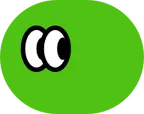
活動詳情 Event Details講者 Facilitator|王顥霖 Homan Wang 語言 Language|粵語 Cantonese費用 Fee|免費 Free從數百年前墾植荒地,到善用水土種茶種稻 ,甚至尋根究底培植西洋菜,川龍的地貌見証了遷移至此的人如何學習與環境互相依存。種子僅為地景的一小部份,卻是文化的開端和記憶的保存。《川龍種子誌》通過收集川龍的地方種子,呈現村民的種植行為、地方作物及地區生態三者的關係。透過種子,可以看見有意無意間的篩選人擇過程,發掘現存地方品種如何成為川龍的口味;飛鳥河流和風帶著野生種子降臨,從野草堆中又看見另一道自然自然的地景。項目以種植打開話題,從種子的多樣性看人類在生活上的變遷,並鼓勵以共享形式將川龍的自然資源與公眾分享。根從何而來,從一顆種子說起,根往何處生,從分享延展。For centuries, the landscape of Chuen Lung has borne witness to the stories of its settlers — from the days they tamed wild terrain to cultivate tea and rice, to their tireless perseverance in growing watercress. Together, these moments reveal the journey through which an interdependence between land and people has been forged.Seeds may represent only a small fraction of the landscape, yet they embody the birth of local culture and serve as vessels of memory. Chuen Lung Seed-graphy gathers local seeds from the region, unveiling the intricate relationships between villagers’ farming practices, native crops, and the surrounding ecology. Through this collection of seeds, we trace both the deliberate and inadvertent processes of selection, exploring how existing plant varieties have reflected the distinctive taste of Chuen Lung. Carried by birds, rivers, and wind, wild seeds take root, weaving another layer of untamed landscape amidst the undergrowth.This project uses planting as a entry point for dialogue. The diversity of seeds reflects the transformations of human life and encourages the sharing of Chuen Lung’s natural resources with the wider public. Where do roots come from? It all begins with a seed. Where will roots grow? Through sharing, they extend outward.【川龍視覺誌】工作室開放(三)“Chuen Lung Visual Research Archive” Open Studio (IlI)31.10.2025- 3.1.2026 (逢星期四至日開放 Open from Thursday to Sunday)在這個人類世——一個人類活動對地球的地質、生態和大氣系統造成深遠影響的時代——川龍成為了承載生態記憶的重要場所,也是一個展現我們與自然複雜糾結共生的縮影。位於大帽山的這個村落彷彿是一座活生生的共生檔案,見證了種子、動物與人類如何在數百年間共同塑造並重塑這片地景。川龍視覺誌第三個工作室「生命織網——種子、動物與川龍棲地」,透過方韻芝的《川龍種子誌》及《嗚鴉自然教室》的動物研究成果,企圖探索這些交織的關聯,不僅揭示了動植物與人類如何共同編織出棲地的生態紋理,挑戰自然與人為的二元界限,更試圖建立多物種思維,為未來的可持續性與可悽居性(habitatability)提供思考線索。In the Anthropocene—an epoch defined by the profound impact of human activity on the Earth’s geology, ecosystems, and atmospheric systems—Chuen Lung emerges as a site layered with ecological memory and a microcosm of entangled coexistence between humans and nature. Situated on the slopes of Tai Mo Shan, Hong Kong’s highest peak, this historic village functions as a living archive, chronicling centuries of symbiotic relationships between seeds, animals, and humans as they collectively shape and reshape the landscape.“The Web of Life: Seeds, Animals, and the Chuen Lung Habitat,” the third open studio by Chuen Lung Visual Research Archive, explores these entwined relationships through an interdisciplinary lens. Highlighting Chuen Lung Seed Study by Vangi Fong and Fauna Studies by Project Crow, the initiative investigates the ecological networks that emerge from the interactions between plants, animals, and humans. By examining this dynamic habitat, the project challenges the dichotomy between the natural and the artificial, while advocating for a multi-species perspective that reimagines sustainability and the concept of habitability.*「川龍視覺誌」獲香港特別行政區政府「藝能發展資助計劃」的資助“Chuen Lung Storyboard – Visualising a Community and its Cultural Heritage” is financially supported by the Arts Capacity Development Funding Scheme of the Government of the Hong Kong Special Administrative Region*活動內容並不反映香港特別行政區政府的意見The content of this activity does not reflect the views of the Government of the Hong Kong Special Administrative Region
